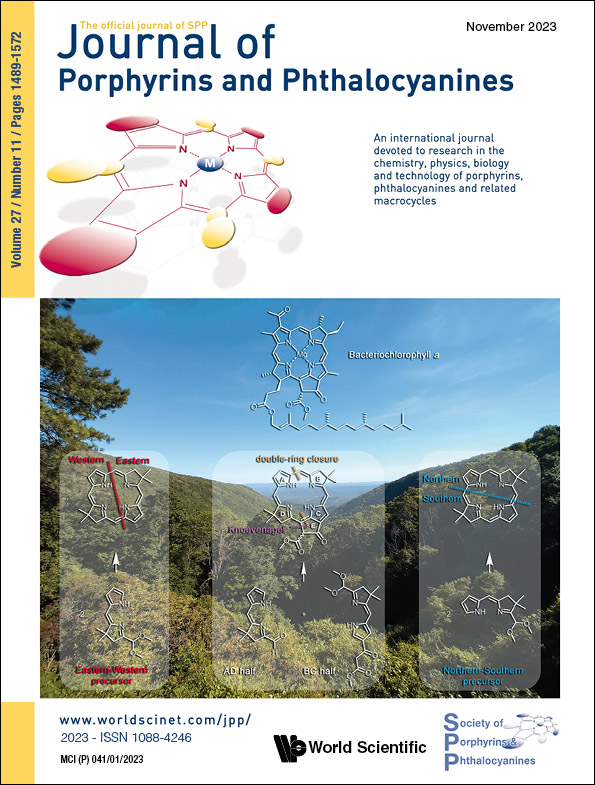Bacteriochlorin syntheses - Status, problems, and exploration
Abstract
Bacteriochlorins – Nature’s near-infrared (NIR) chromophores – are distinguished by an intense (𝜀 ∼;105 M−1cm−1) long-wavelength absorption band in the ∼;700–1000 nm. The development of routes to prepare synthetic, tailorable bacteriochlorins holds promise for multiple disciplines where NIR-light-promoted photoactivity is of interest. A de novo route to bacteriochlorins equipped with a stabilizing gem-dimethyl group in each pyrroline ring was discovered in 2003. Continued development in this arena over 20 years has led to additional routes as well as methods to install substituents at selected positions about the perimeter of the macrocycle. The present paper reports studies that highlight substantial limitations of existing synthetic routes, including stymied access to multi-bacteriochlorin arrays and the inability to install (in a rational way) distinct groups at opposite sides of the macrocycle. The origins of the limitations are traced to particular stages of the chemistry ranging from derivatizing pyrroles, creating pyrrolines, constructing and elaborating dihydrodipyrrins, coupling dihydrodipyrrins, and forming macrocycles. Through exploration of a dozen aspects of bacteriochlorin syntheses, 60 new compounds (and nine known compounds via improved syntheses) have been prepared and characterized; the data include 20 single-crystal X-ray diffraction analyses. The research taken together points to areas of focus to fulfill the promise of this fascinating class of compounds.

Handbook of Porphyrin Science now available in 46 volumes


